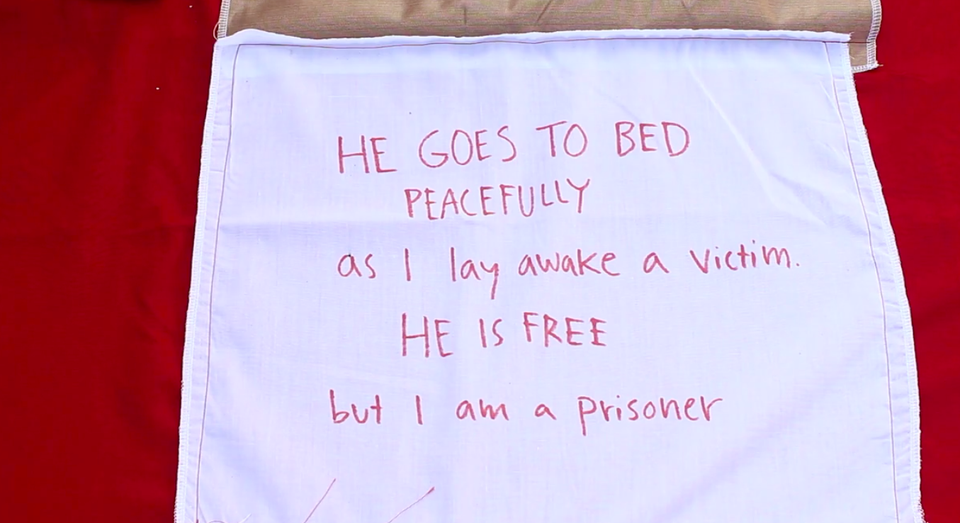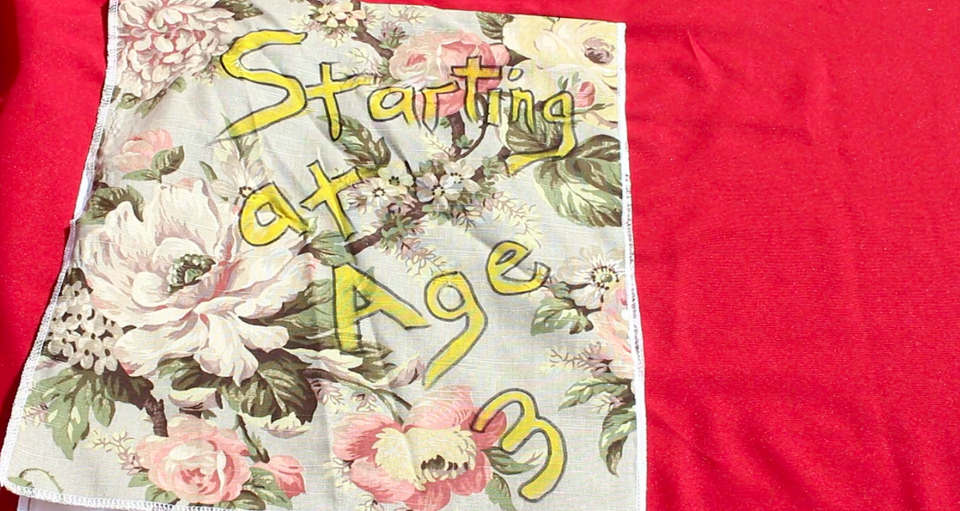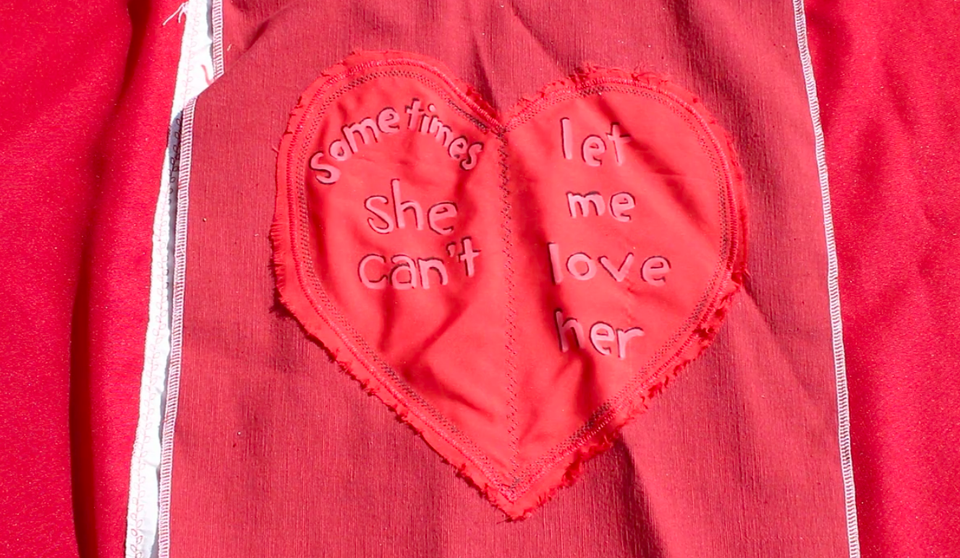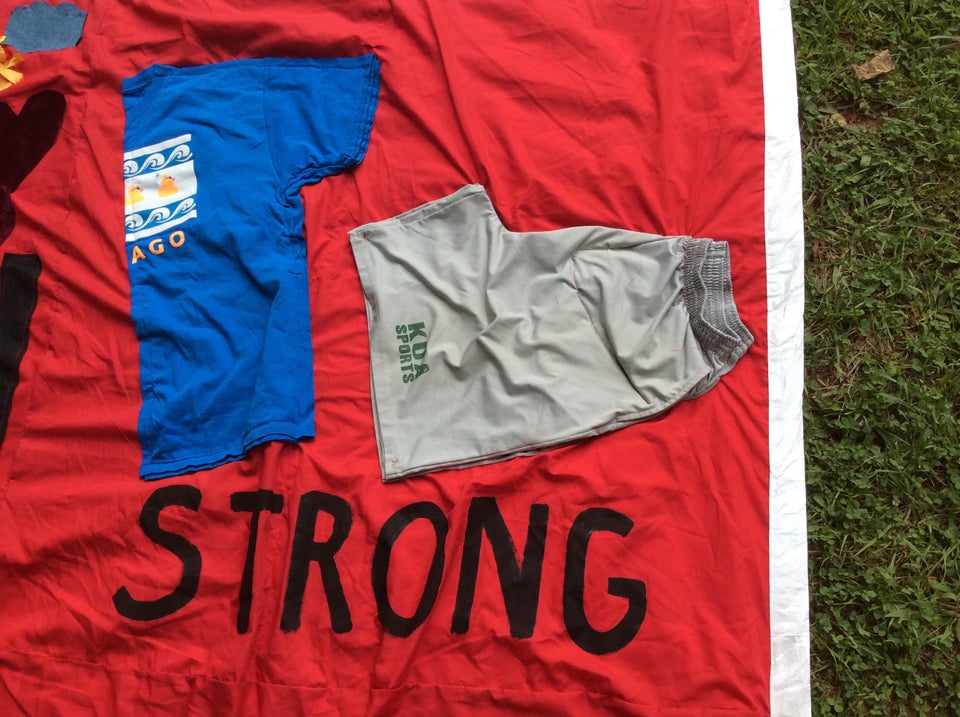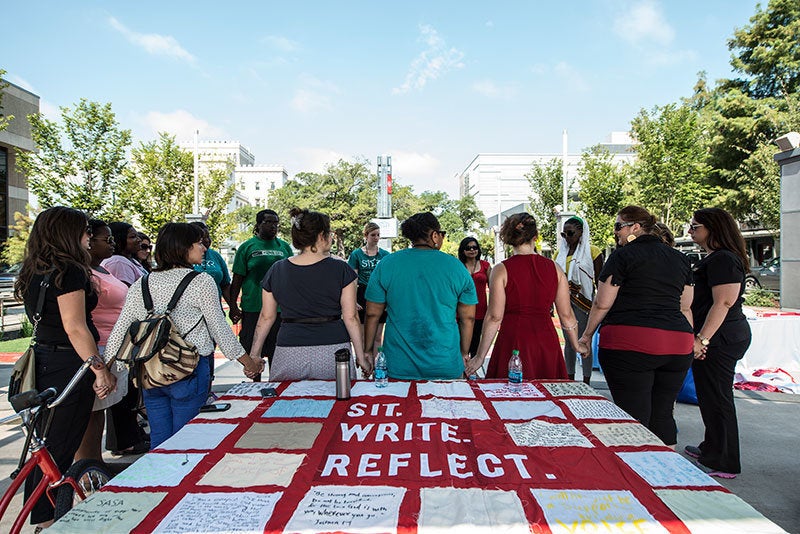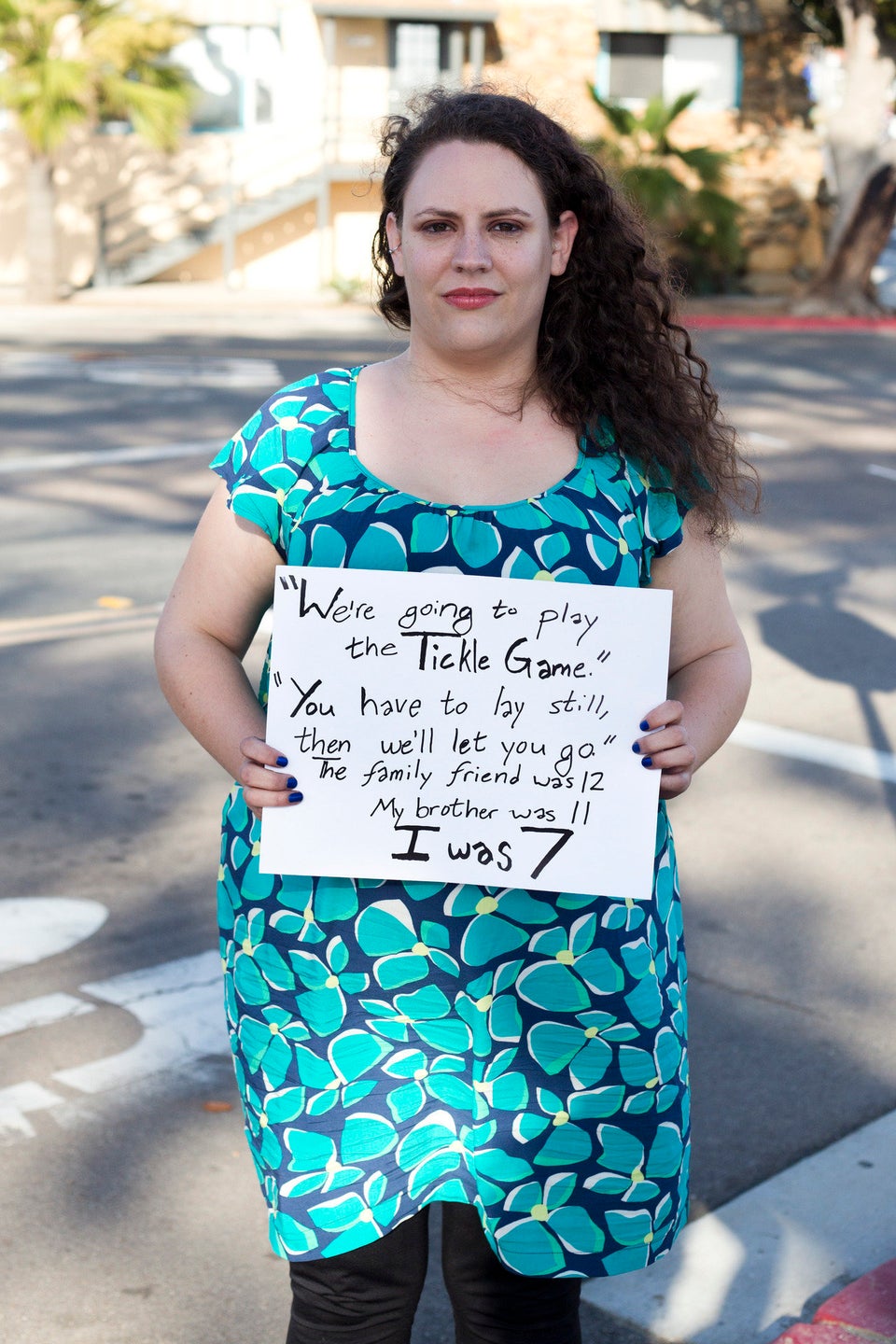“You thought you broke me but you made me stronger.”
”Your voice matters.”
”Learn to love again.”
”There is hope.”
”Why?”
These are some of the messages scrawled in paint and glitter onto red squares of fabric, stitched together to create the Monument Quilt. Each patch is made by a survivor of rape or abuse ― a community of people who were made to believe their voices and stories weren’t important. Together, their patches form a massive, collective quilt, a materialization of trauma and power that is both a method of healing and a political battle cry. A burgeoning movement made from words, images, fabric and thread.
Artists Rebecca Nagle and Hannah Brancato, co-founders of the activist group FORCE: Upsetting Rape Culture, began the Monument Quilt in 2013. Both were living in Baltimore, exploring issues of sexual and domestic assault in their work. The quilt was an effort to take the conversations unfolding in their work to a broader audience and make their ideas take up physical space.
“Quilts have a strong history in social justice and healing,” Nagle explained in an interview with The Huffington Post. “Quilting circles bring people together.” Inspired by the AIDS Memorial Quilt, which features 48,000 panels dedicated to those who lost their lives to HIV/AIDS, Nagle and Brancato set out to create the softest and most powerful political weapon they could.
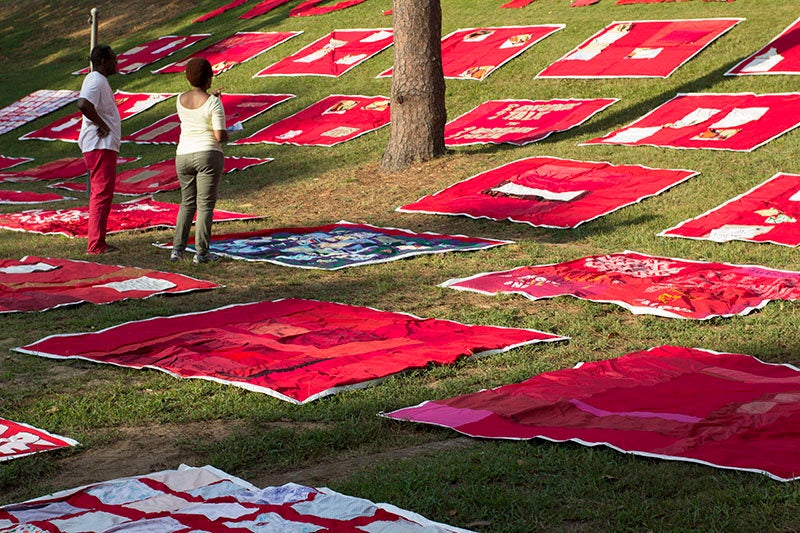
For many survivors of rape and abuse, the trauma is experienced personally, privately and silently. Nagle, herself a survivor, wanted to uproot the cultural tradition of muffling survivors, clouding their experiences in a fog of isolation and shame.
“There should be a public monument about rape,” Nagle said. “It’s a trauma that individuals carry, but it’s also collective trauma. There is no public space to have community support. Trauma is isolating, it breaks trust. We need public monuments as a tool for survivors, a space for survivors. So we started creating guerrilla monuments.”
Over the past three years, the Monument Quilt has collected over 1,000 squares from around the country. By 2018, the artists hope to have amassed 6,000, which they will use to write “NOT ALONE” on Washington D.C.’s national mall, stretching from the Capitol building to the Washington Monument.
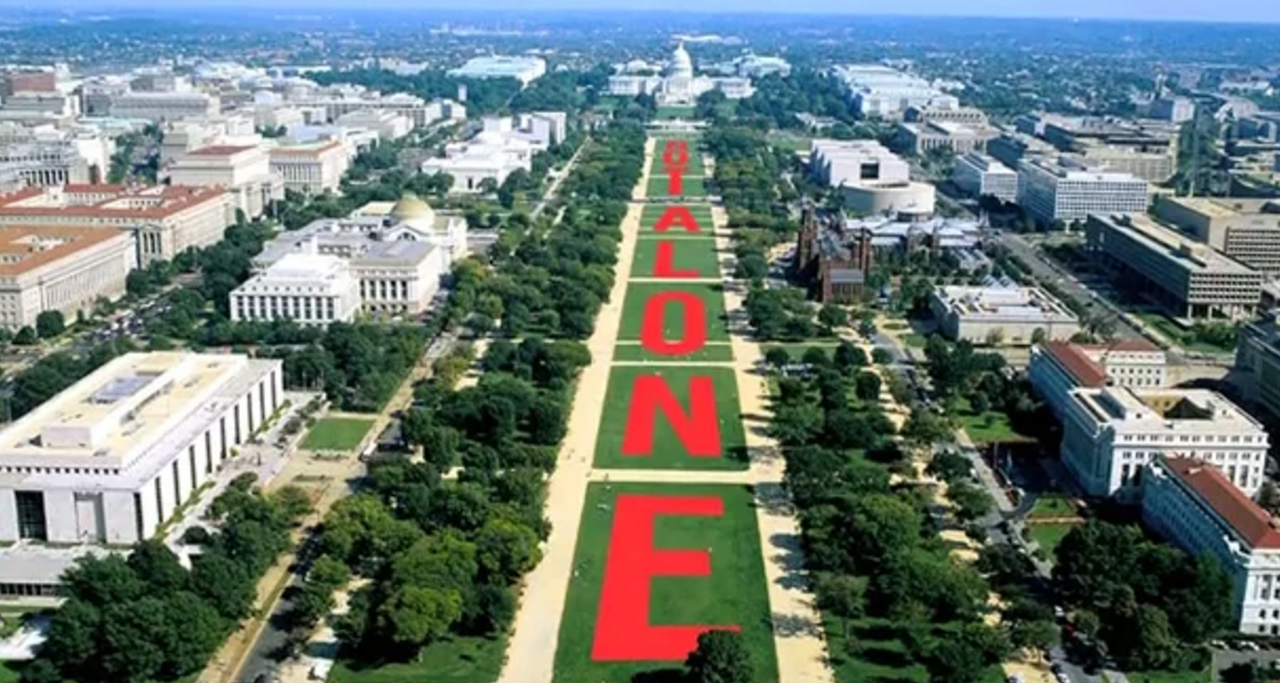
To quilt is to unite scraps and fragments into something bigger, while still maintaining the power and beauty of each individual part. The Monument Quilt operates similarly, refusing to privilege any one experience above the rest. “By stitching together many stories, not one, we resist the mainstream narrative of sexual assault,” Nagle expressed.
“We’re not only giving a voice to young, cis, white women. We’re amplifying voices of color, LGBTQ voices, telling many different stories at once. And we’re not filtering any of them. We are trying to shift the public understanding of what the public understanding of rape is.”
Both Nagle and Brancato contributed squares themselves to the project. For Nagle, it was the first time she told her story in concrete terms.
“I’ve unpacked my experience with sexual violence from many different angles,” she explained in a 2014 HuffPost blog entry. “And of all those angles, while stages in a long process of healing, also conveniently avoided the truth. The kind of truth that once you speak it you know that it is permanent. And then one day, I bought a tacky table cloth from the dollar store. And alone one night I wrote on that ugly tablecloth in beige paint: ‘The closeness I felt towards him was always mitigated by a knowing fear. My step-dad raped me when I was in the third grade.’”

Thinking back on the experience of sharing her story, Nagle describes it as a transformative one. “You can’t go back from that,” she said. “In my own healing process I had used writing a lot, but there was something about the physicality of the fabric that allowed me to express myself.”
Over the next two years, as thousands more mark their experiences in thread and paint, the collective story of rape will be shaped by those who have survived it. “We’re making a problem our society works hard to keep invisible visible,” Nagle concluded. “When you’re walking through a sea of stories, and you feel the enormity and weight of it, and you know that this only a fraction of the people who are experiencing this trauma.”
If you are interested in contributing to the Monument Quilt, check out the website to learn about how you can make a square or host a quilt-making workshop in your community. FORCE: Upsetting Rape Culture was recently awarded the 2016 Janet & Walter Sondheim Artscape Prize, and the group’s work is on view at the Baltimore Museum of Art through July 31, 2016.
